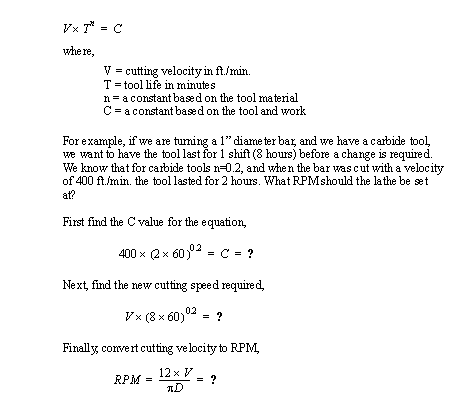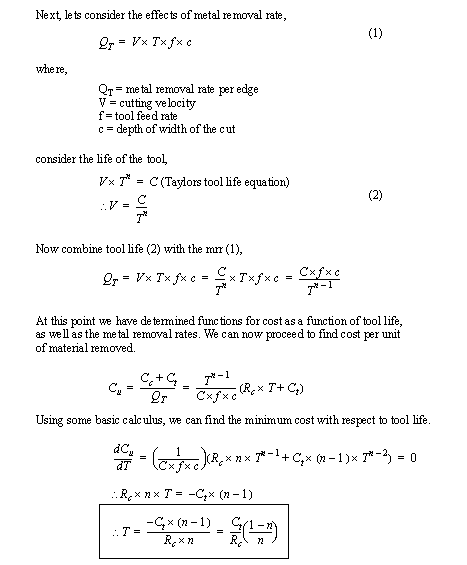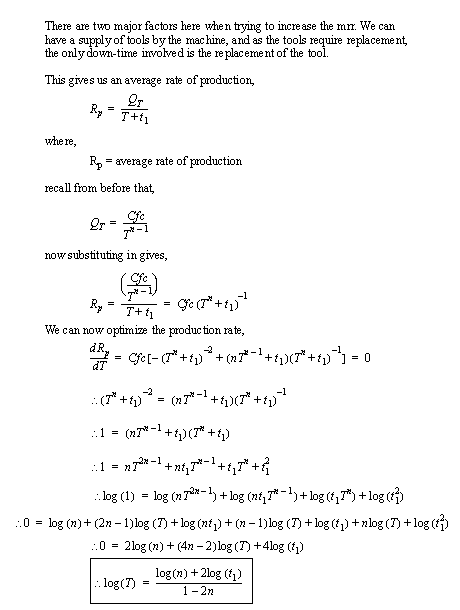
• Tool life is the time a tool can be reliably be used for cutting before it must be discarded/repaired.
• Some tools, such as lathe bits are regularly reground after use.
• A tool life equation was developed by Taylor, and is outlined below,

• An important relationship to be considered is the relationship between cutting speed and tool life,

• Although the previous equation is fairly accurate, we can use a more complete form of Taylor’s tool life equation to include a wider range of cuts.

• As with most engineering problems we want to get the highest return, with the minimum investment. In this case we want to minimize costs, while increasing cutting speeds.
• EFFICIENCY will be the key term - it suggests that good quality parts are produced at reasonable cost.
• Cost is a primarily affected by,
• The production throughput is primarily affected by,
- accuracy including dimensions and surface finish
• The factors that can be modified to optimize the process are,
- cutting velocity (biggest effect)
• We previously considered the log-log scale graph of Taylor’s tool life equation, but we may also graph it normally to emphasize the effects.

• There are two basic conditions to trade off,
- Low cost - exemplified by low speeds, low mrr, longer tool life
- High production rates - exemplified by high speeds, short tool life, high mrr
*** There are many factors in addition to these, but these are the most commonly considered

• A simplified treatment of the problem is given below for optimizing cost,


• We can also look at optimizing production rates,

• We can now put the two optimums in perspective,
